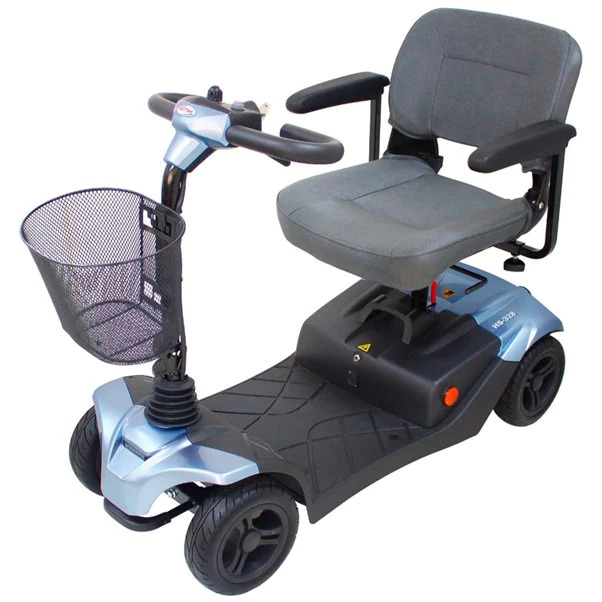Whether you’re looking for electric mobility scooter or electric wheelchair, there are a few things that you need to know before purchasing one. Mobility scooters and electric wheelchairs are designed to help people with limited mobility and their caregivers get around more easily and safely, so choosing the right one is crucial.
There are many different types of mobility scooters and electric wheelchairs on the market, each one better suited for particular conditions than others.
In this article, we'll discuss what makes these types of vehicles different from one another, how they work (and don't), how to choose the best option for your needs — including what types of features you should look for when shopping around — as well as some common questions about using them (like whether they're legal on sidewalks).
What do the different classes of mobility scooters mean?
There are three different classes of mobility scooters:
- Class 3: These are the most powerful and have a top speed of 12 mph. They can be driven on the road, in addition to being able to travel in off-road areas such as parks and bike paths. Due to their high speeds, they are considered motor vehicles by law and require registration with your local DMV.
- Class 2: These provide good performance for an affordable price, making them ideal for short commutes around town or longer trips when traveling outside city limits. Their maximum speed is 8 mph, but you can still use them on the road if you're over 18 years old and have held your driver's license for at least one year (in some states).
- Class 1: Also known as "personal mobility devices," these devices come in at just under 6mph (or 9km/h) with a range of up to 8 miles (12 km). They do not require registration or insurance because they don't meet federal definition standards for motorized vehicles; however, if you drive one off-road then it must be insured against liability claims stemming from accidents incurred while operating it on public land like trails or sidewalks nearby private property where parking isn't allowed without permission from someone who lives there -- not just anyone who happens upon your travels through woods near where they live!
How much will an electric mobility scooter cost?
Electric mobility scooters can cost anywhere from $1,300 to $5,000. This range is largely dependent on the brand and features you want in your scooter. As with other types of mobility equipment, it's important to research the quality and reliability of the brands before purchasing one.
For example, a basic electric mobility scooter made by a low-quality brand may cost under $1,500 whereas a higher-end model from a reputable company might be closer to $4,000 or more.

How do you maintain and store a mobility scooter properly?
It is important to store your folding mobility scooter in a dry location and out of direct sunlight. Moisture can damage the electrical system, or even rust the frame. If you have limited storage space, you may want to consider getting one with folding wheels so that it can be stored in a smaller space or on an indoor rack.
To keep your e-scooter looking great, wipe down any dirt or debris off of its surface regularly with a damp cloth - this will prevent grime from building up over time!
Be sure not to use window cleaners or other harsh chemicals - they could damage the finish on your mobility scooter's paint job over time (and make it look like crap).
Conclusion
All in all, we can say that the future of electric mobility scooter is bright. They're becoming more affordable and accessible, so you don't have to pay thousands of dollars up front. Plus they're easy to use and don't require a lot of maintenance or upkeep once they're set up properly!
Source From - Electric Mobility Scooter: Everything You Need To Know
